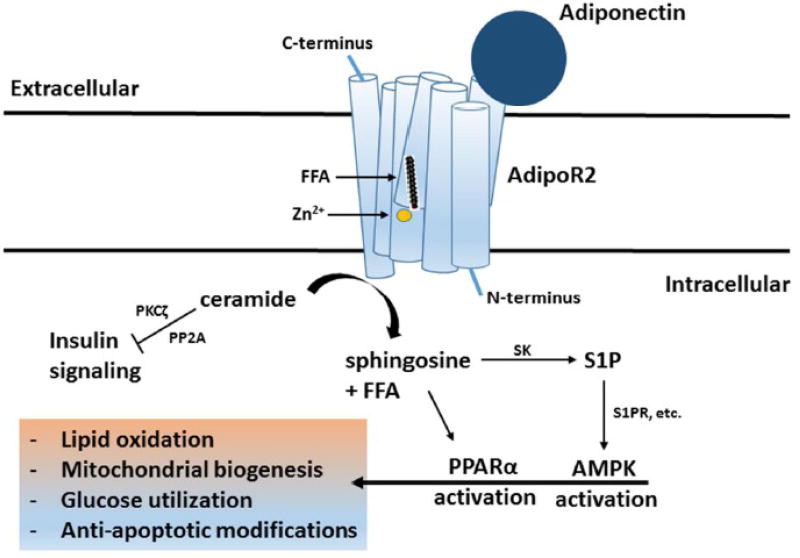Figure 1.
Adiponectin-mediated agonism of adipoR1 and adipoR2 enhances receptor-intrinsic ceramidase activity. This degrades ceramide, a bioactive sphingolipid that blunts insulin signaling via PKCζ and PP2A. Specifically, this catalytic activity is driven by the nucleophilic cleavage of ceramide’s defining amide bond by a zinc-stabilized hydroxide ion. The resulting sphingosine is available for conversion into S1P by sphingosine kinase (SK). S1P is further involved with AMPK activation, while sphingosine and free fatty acid (FFA) are available to serve as ligands for PPARα activation. Together, these activities promote lipid oxidation, mitochondrial biogenesis, glucose utilization, and other anti-apoptotic modifications to culminate in adiponectin’s metabolic benefits within target cells.

